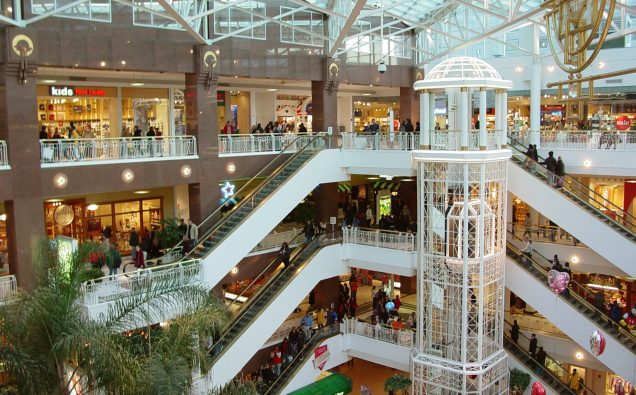
Pentagon City Mall, Photo: Ben Schumin/Wikimedia Commons
Signaling a strong consumer confidence, holiday sales in the United States jumped 4.9 percent this year in a new record for the amount of dollars spent.
According to Mastercard SpendingPulse, this is the largest year-over-year increase since 2011.
The technology company also reports that online shopping also also rocketed 18.1 percent compared to 2016, boosted by a late season rally.
The SpendingPulse released details of holiday shopping from November 1 through December 24, and covers retail sales across all payment types, including cash and check.
“Evolving consumer preferences continue to play out in the aisles and online sites of retailers across the U.S.,” said Sarah Quinlan, senior vice president of Market Insights, Mastercard, said, according to a news release.
“Overall, this year was a big win for retail,” she said.
Among the key factors behind the soaring shopping trend has been the strong state of the U.S. economy, which has seen unemployment rates plummet to the lowest level in years.
But the Mastercard SpendingPulse also notes that the “retailers who tried new strategies to engage holiday shoppers were the beneficiaries of this sales increase.”
Here are some of the key findings of the Mastercard SpendingPulse report:
“This was a winning holiday season for retail overall, though the story was different category by category.
“For many shoppers, there was no place like home this holiday season. Electronics and appliances increased 7.5 percent, the strongest growth of the last 10 years.
The home furniture and furnishings category grew 5.1 percent, as did home improvement.
“Specialty apparel and department stores, which both traditionally see the bulk of sales happen in-store, saw moderate gains. This is particularly impressive given recent store closings.
“Retailers’ heavy early-season promotions paid off, with the first three weeks of November seeing significant jumps.
“In addition, shoppers were still spending late into the season, with December 23 next to Black Friday in terms of single-day spending. This was a boon to certain categories, including jewelry. Jewelry grew 5.9 percent, largely driven by last-minute sales.


















